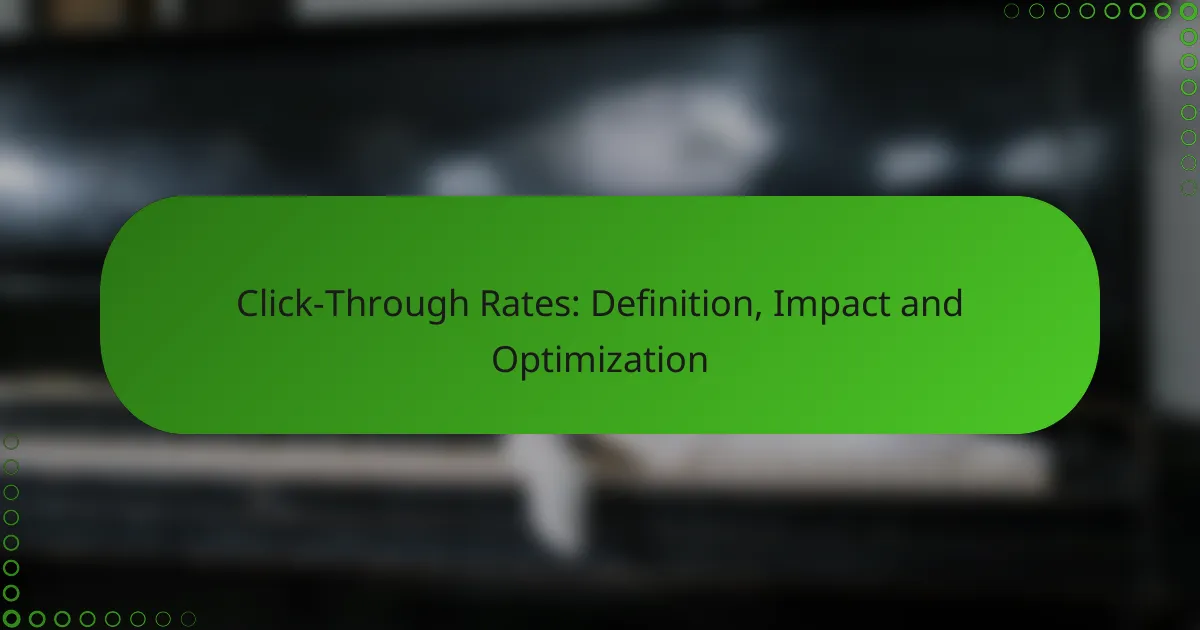Conversion tracking is essential for businesses aiming to evaluate the success of their marketing strategies by monitoring user interactions that lead to conversions. By employing various methods and tools, companies can gain valuable insights into customer behavior, enabling them to optimize their campaigns for improved performance. Choosing the right conversion tracking tool is crucial, as it should align with your specific needs and objectives.
![]()
What are the methods for conversion tracking?
Conversion tracking methods allow businesses to measure the effectiveness of their marketing efforts by monitoring user actions. These methods include various techniques and tools that help identify how users interact with websites and campaigns, ultimately leading to conversions.
Pixel tracking
Pixel tracking involves placing a small, invisible image on a webpage or in an email that records user interactions. When a user loads the page or opens the email, the pixel sends data back to the server, indicating that a conversion has occurred. This method is widely used for tracking actions like purchases or sign-ups.
While pixel tracking is effective, it can be affected by ad blockers or privacy settings that prevent the pixel from loading. To mitigate this, ensure that your tracking pixels are optimized for various browsers and devices.
UTM parameters
UTM parameters are tags added to the end of URLs to track the performance of campaigns in Google Analytics. By appending these parameters, you can identify the source, medium, and campaign name associated with each visitor. This helps in analyzing which marketing efforts drive traffic and conversions.
To use UTM parameters effectively, keep them consistent and clear. For example, a URL might look like this: www.example.com/?utm_source=newsletter&utm_medium=email&utm_campaign=summer_sale. This clarity allows for better data analysis and reporting.
Server-side tracking
Server-side tracking captures user interactions directly on the server rather than relying on client-side scripts. This method offers greater accuracy and security, as it is less susceptible to ad blockers and browser restrictions. It can track conversions across different platforms and devices.
Implementing server-side tracking requires more technical setup and may involve using APIs to send data to analytics platforms. However, the trade-off is improved reliability and the ability to collect data that client-side methods might miss.
Google Tag Manager
Google Tag Manager (GTM) is a powerful tool that simplifies the process of managing tracking codes on your website. It allows marketers to add and update tags without modifying the code directly, making it easier to implement various tracking methods, including pixels and UTM parameters.
Using GTM can streamline your conversion tracking setup. Ensure you test your tags thoroughly before going live to avoid data discrepancies. Regularly audit your tags to keep your tracking accurate and up-to-date.
Cross-device tracking
Cross-device tracking enables businesses to follow user interactions across multiple devices, providing a comprehensive view of the customer journey. This method is crucial as users often switch between smartphones, tablets, and desktops before completing a conversion.
To implement cross-device tracking, consider using user authentication methods, such as logins, to associate sessions across devices. This approach helps in accurately attributing conversions to the correct marketing channels and campaigns.
![]()
What are the benefits of conversion tracking?
Conversion tracking provides valuable insights into customer behavior, allowing businesses to measure the effectiveness of their marketing efforts. By understanding which actions lead to conversions, companies can optimize their strategies to enhance performance and achieve better results.
Improved ROI
Conversion tracking directly contributes to improved return on investment (ROI) by identifying which campaigns and channels generate the most conversions. Businesses can allocate their budgets more effectively, focusing on high-performing areas while reducing spending on less effective strategies.
For example, if a company finds that email marketing campaigns yield a significantly higher conversion rate than social media ads, it can shift more resources to email marketing. This targeted approach can lead to a noticeable increase in overall ROI.
Enhanced audience targeting
With conversion tracking, businesses gain insights into their audience’s preferences and behaviors, enabling them to refine their targeting strategies. By analyzing data on who converts and under what circumstances, companies can create more personalized marketing messages that resonate with specific segments of their audience.
For instance, if data shows that younger demographics respond better to video content, a business can tailor its advertising efforts to include more engaging video ads aimed at that age group, thereby increasing the likelihood of conversions.
Data-driven decision making
Conversion tracking facilitates data-driven decision making by providing concrete evidence of what works and what doesn’t. This analytical approach allows businesses to test different strategies, measure their outcomes, and make informed adjustments based on real performance data.
For effective data-driven decisions, companies should regularly review their conversion metrics and conduct A/B testing on various elements, such as landing page designs or call-to-action placements. This iterative process helps in continuously improving conversion rates over time.
![]()
What tools can be used for conversion tracking?
Various tools are available for conversion tracking, each offering unique features and capabilities. Selecting the right tool depends on your specific needs, such as the platforms you use, the type of data you want to collect, and your budget.
Google Analytics
Google Analytics is a widely used tool for tracking conversions across websites and apps. It allows users to set up goals and track user interactions, such as form submissions or product purchases, providing insights into user behavior and conversion rates.
To effectively use Google Analytics for conversion tracking, ensure that you define clear goals within the platform. Regularly review your conversion reports to identify trends and areas for improvement. Common pitfalls include not setting up goals correctly or failing to analyze the data consistently.
Facebook Ads Manager
Facebook Ads Manager is essential for tracking conversions from Facebook advertising campaigns. It enables advertisers to measure the effectiveness of their ads by tracking actions taken by users after clicking on ads, such as purchases or sign-ups.
When using Facebook Ads Manager, ensure that your Facebook Pixel is properly installed on your website. This allows for accurate tracking of conversions and retargeting efforts. A common mistake is not utilizing custom conversions, which can provide more tailored insights into user actions.
Adobe Analytics
Adobe Analytics is a robust tool for enterprise-level conversion tracking, offering advanced features for data analysis and reporting. It provides detailed insights into customer journeys and allows for real-time data processing.
To maximize the benefits of Adobe Analytics, focus on setting up comprehensive tracking for all user interactions. Utilize its segmentation capabilities to analyze different user groups and their conversion behaviors. Be aware that the complexity of the tool may require additional training or resources.
Hotjar
Hotjar is a user behavior analytics tool that complements traditional conversion tracking by providing heatmaps, session recordings, and feedback polls. It helps visualize how users interact with your site, which can inform conversion optimization strategies.
To effectively use Hotjar, implement heatmaps to identify areas where users click most frequently. Session recordings can reveal potential friction points in the conversion process. Avoid relying solely on Hotjar for quantitative data; combine it with other tools for a comprehensive view of user behavior.
![]()
How to implement conversion tracking effectively?
To implement conversion tracking effectively, start by clearly defining what constitutes a conversion for your business. This involves setting specific goals, integrating tracking codes, and ensuring the accuracy of the data collected.
Define conversion goals
Defining conversion goals is crucial as it sets the foundation for your tracking efforts. Common goals include sales, lead generation, newsletter sign-ups, or downloads. Each goal should be specific, measurable, and relevant to your business objectives.
For example, if your goal is to increase sales, specify the target percentage increase or the number of sales within a certain timeframe. This clarity helps in evaluating the effectiveness of your marketing strategies.
Set up tracking codes
Setting up tracking codes involves integrating snippets of code into your website or app to monitor user interactions. Tools like Google Analytics or Facebook Pixel provide easy-to-use tracking codes that can be added to specific pages or actions.
Ensure that the codes are placed correctly, typically in the header or footer of your site. This placement allows for accurate data collection on user behavior related to your defined conversion goals.
Test tracking accuracy
Testing tracking accuracy is essential to ensure that the data collected reflects true user behavior. Use tools like Google Tag Assistant or Facebook’s Pixel Helper to verify that your tracking codes are firing correctly.
Conduct regular checks, especially after making changes to your website or marketing campaigns. This practice helps identify any discrepancies in data, allowing you to make necessary adjustments to improve tracking reliability.
![]()
What are the common challenges in conversion tracking?
Conversion tracking faces several challenges that can hinder accurate measurement and analysis. Key issues include data privacy regulations, cross-platform discrepancies, and complexities in attribution models.
Data privacy regulations
Data privacy regulations, such as the GDPR in Europe and CCPA in California, impose strict rules on how user data can be collected and used. These regulations often require explicit consent from users, which can limit the amount of data available for tracking conversions.
Businesses must ensure compliance with these laws to avoid hefty fines, which may involve implementing transparent data collection practices and providing users with clear options to opt-in or opt-out. Regular audits of data handling practices can help maintain compliance.
Cross-platform discrepancies
Cross-platform discrepancies arise when users interact with a brand across multiple devices or channels, leading to fragmented tracking data. For instance, a customer might first see an ad on their smartphone, then visit the website on a desktop, complicating the tracking of their conversion journey.
To mitigate these discrepancies, businesses can use unified tracking solutions that consolidate data from various sources. Implementing user authentication can also help link interactions across devices, providing a clearer picture of the customer journey.
Attribution model complexities
Attribution model complexities refer to the challenges in determining which marketing channels or touchpoints should receive credit for a conversion. Different models, such as last-click, first-click, or multi-touch attribution, can yield varying results, making it difficult to assess the effectiveness of each channel.
Choosing the right attribution model depends on the business goals and the customer journey. Companies should regularly review their attribution strategies and consider using advanced analytics tools that can provide insights into the performance of different channels over time.
![]()
How does conversion tracking impact display advertising?
Conversion tracking significantly enhances display advertising by allowing marketers to measure the effectiveness of their campaigns. It provides insights into user behavior, enabling advertisers to optimize their strategies based on actual performance data.
Methods of Conversion Tracking
Common methods of conversion tracking include pixel tracking, URL tracking, and event tracking. Pixel tracking uses a small piece of code embedded in a webpage to monitor user actions, while URL tracking involves appending parameters to a URL to identify conversions. Event tracking captures specific interactions, such as button clicks or form submissions.
Each method has its advantages. Pixel tracking is straightforward and widely used, while URL tracking can be particularly effective for campaigns with distinct landing pages. Event tracking offers detailed insights into user engagement but may require more technical setup.
Benefits of Conversion Tracking
Conversion tracking provides several benefits, including improved ROI, better audience targeting, and enhanced campaign optimization. By understanding which ads lead to conversions, marketers can allocate budgets more effectively and focus on high-performing channels.
Additionally, conversion tracking helps identify customer segments that are more likely to convert, allowing for tailored messaging. This data-driven approach can lead to increased engagement and higher conversion rates.
Tools for Conversion Tracking
There are various tools available for conversion tracking, including Google Analytics, Facebook Pixel, and various marketing automation platforms. Google Analytics offers comprehensive tracking capabilities and integrates well with other Google services, making it a popular choice.
Facebook Pixel allows advertisers to track conversions from Facebook ads, providing insights into user behavior across platforms. Other specialized tools may offer unique features, such as heatmaps or session recordings, to further enhance tracking capabilities.








